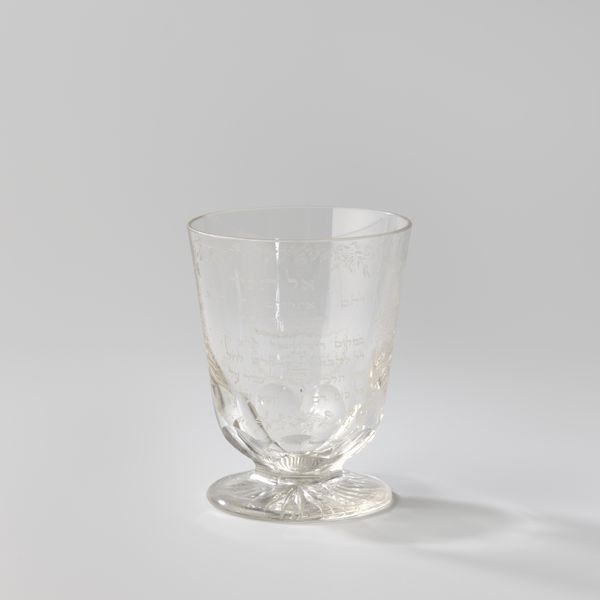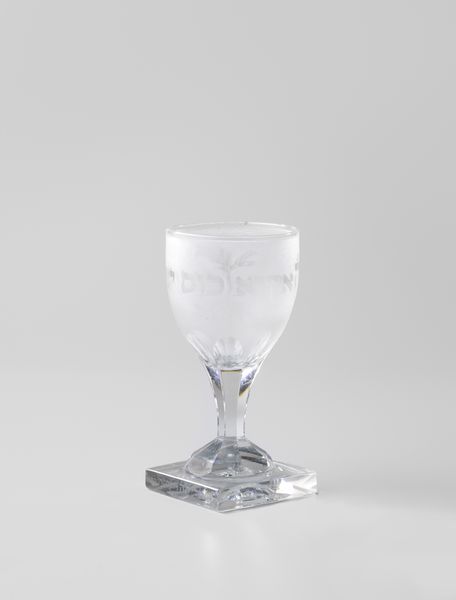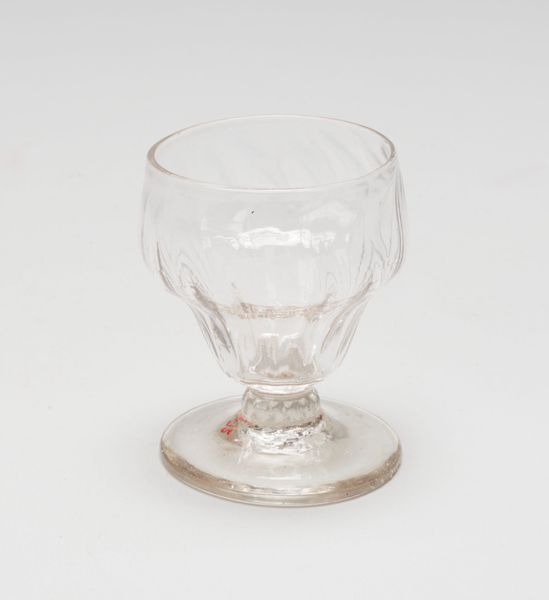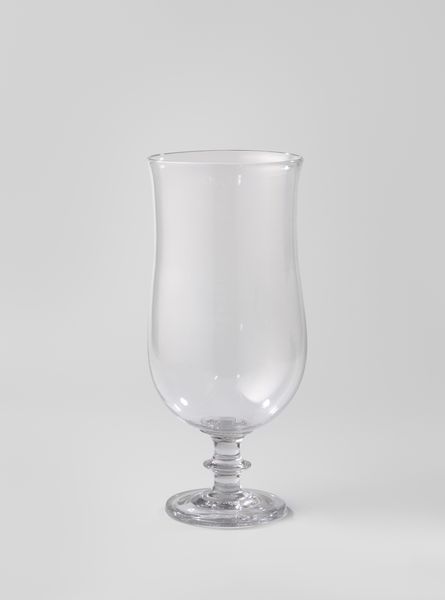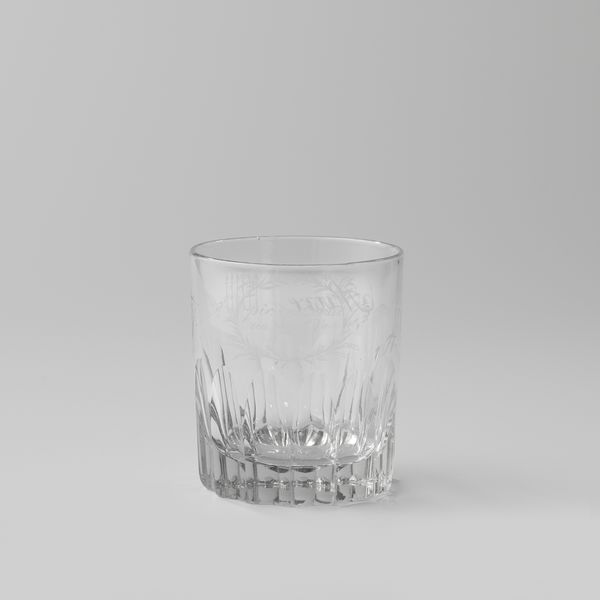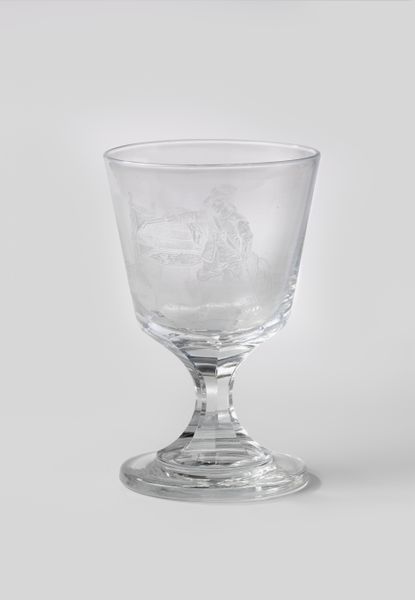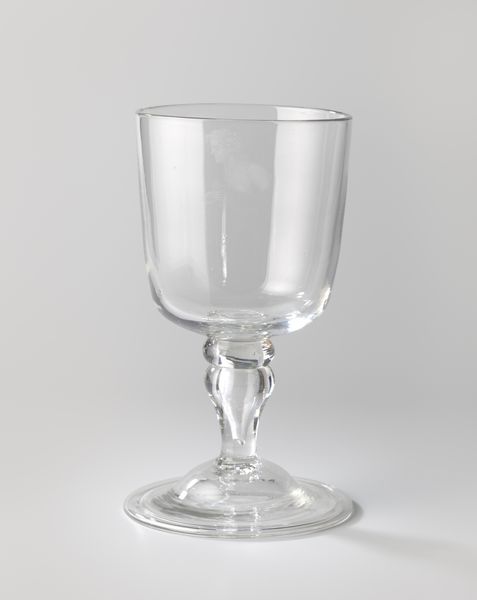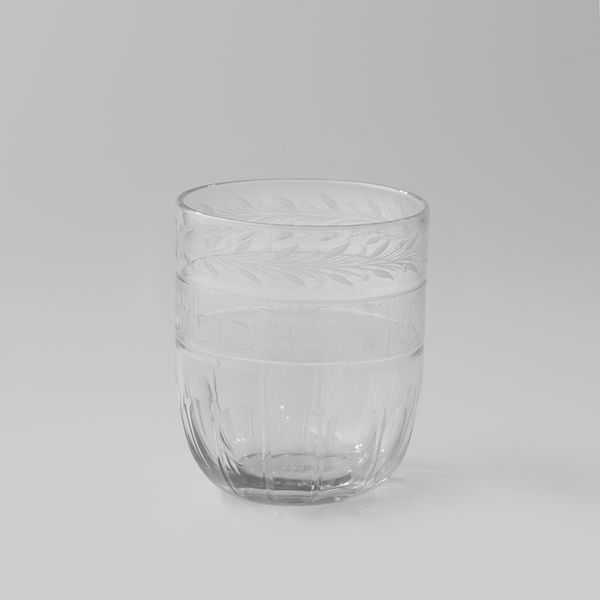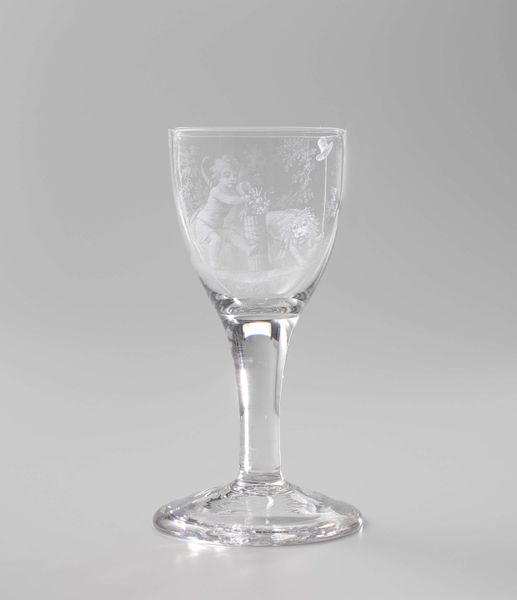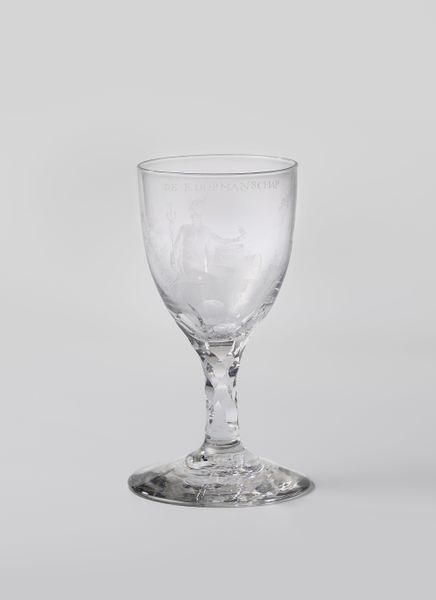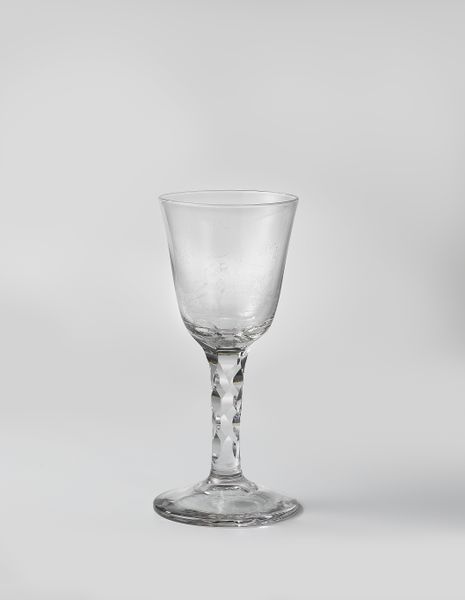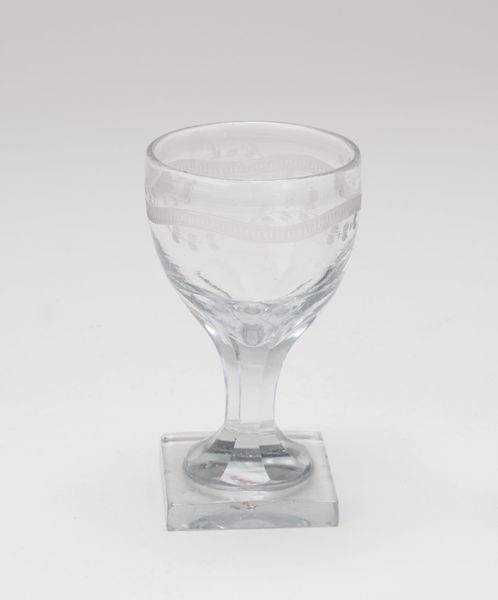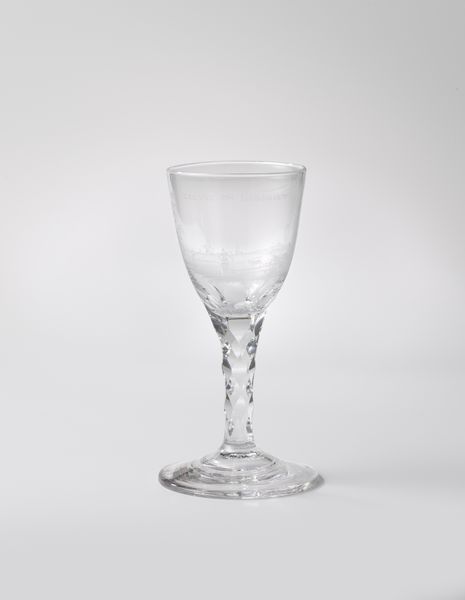
photography, glass
#
photography
#
glass
Dimensions: height 11.5 cm, diameter 8 cm, diameter 6.7 cm
Copyright: Rijks Museum: Open Domain
Curator: Standing before us, we have a delicate 'Kelkglas met Hebreeuws opschrift,' or chalice glass with Hebrew inscription, dating back to the mid-19th century. Editor: My first thought is about the weight of absence, actually. Its transparency almost makes it disappear against the stark background. Curator: Indeed, that clarity of glass amplifies the subtle inscription around the bowl. What makes this piece interesting is its probable origin. Given its date of circa 1850 to 1863 and the context of Dutch society at that time, the glass likely speaks to the role Jewish communities played within commercial and artistic circles in the Netherlands. Editor: Absolutely. What sentiments do you think this kind of glass stirred? Because in today's age we would speak of social standing. Back then this could have functioned almost like a marker of religious or community identity. Curator: It served exactly that purpose and as objects of ceremony. By looking closely, we can imagine the hands that held it and what this cup has witnessed over centuries. I can’t read Hebrew so I couldn’t be certain, but I’d imagine that is etched around the rim here are words meant to call on collective experiences of community in gathering. The inscription must resonate far beyond simple aesthetics, especially in an era characterized by great societal shift and the establishment of constitutional rights for Jews. Editor: Considering it, I find the fragility of the glass is kind of symbolic here, isn't it? Its almost like the delicate balancing act between integration and the maintaining the cultural identity during that era, not quite as stable as the solid glass it’s comprised of. Curator: A powerful and sensitive observation, one that draws into a dialogue art history with questions of religious and political identity. Editor: And brings forward our own complex readings from this vantage point in time. Curator: Thank you. It has provided a renewed understanding to appreciate the nuances of history.
Comments
No comments
Be the first to comment and join the conversation on the ultimate creative platform.
